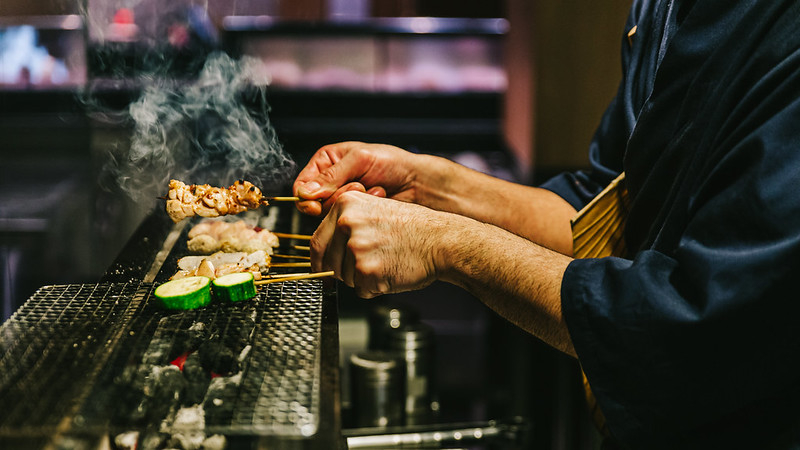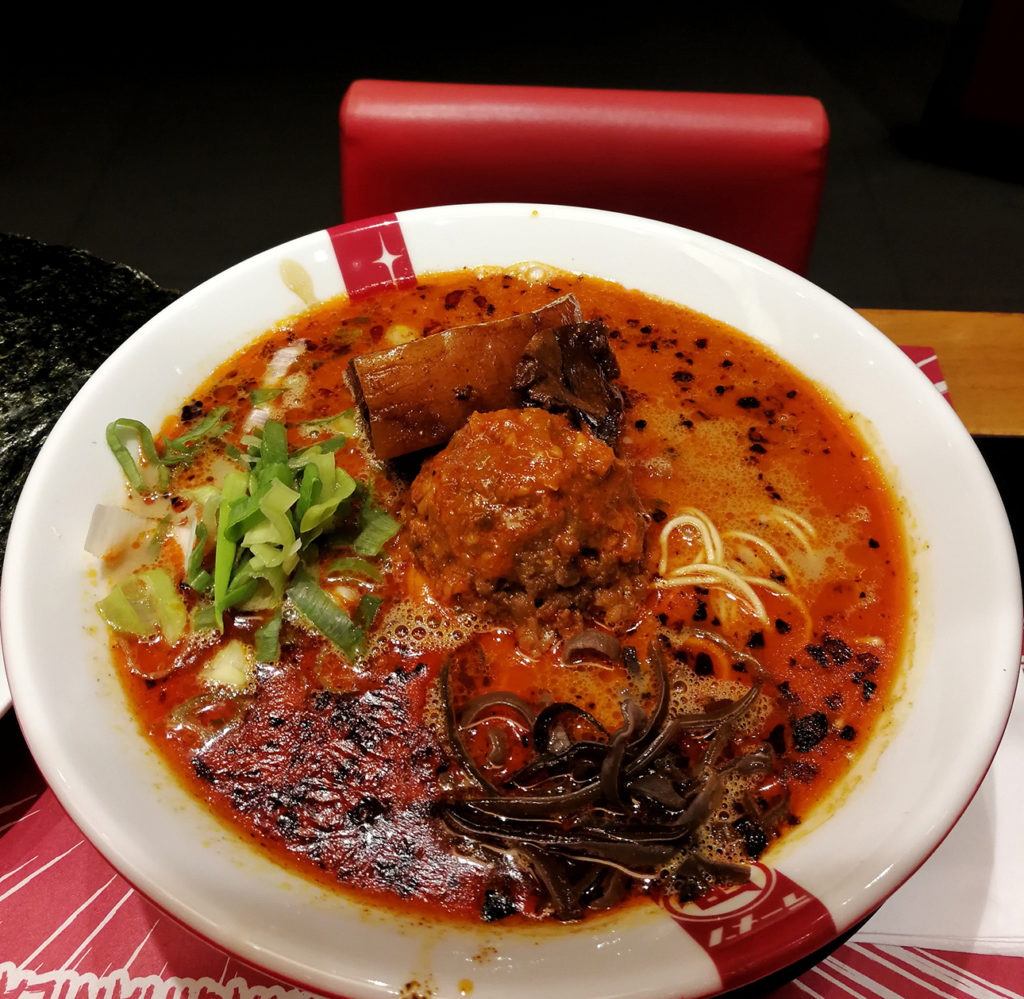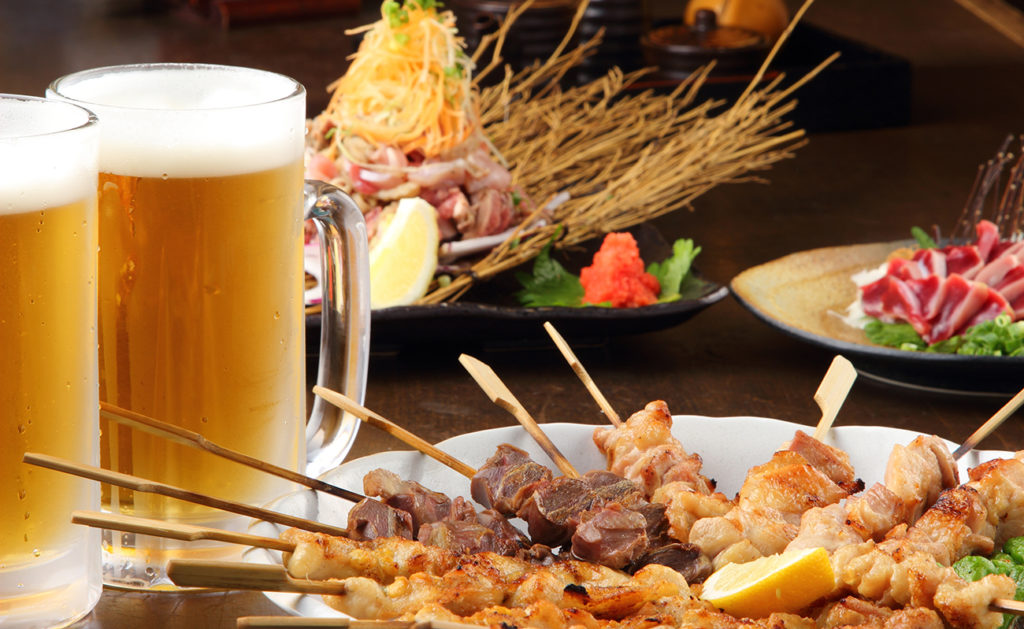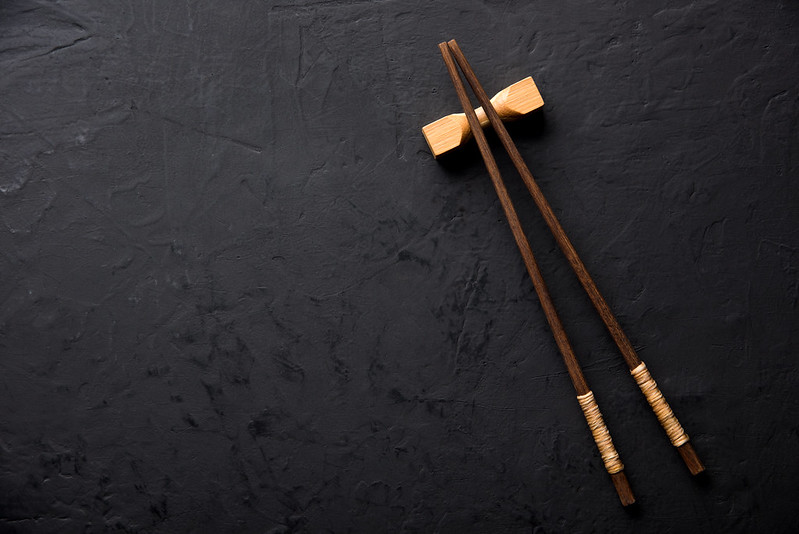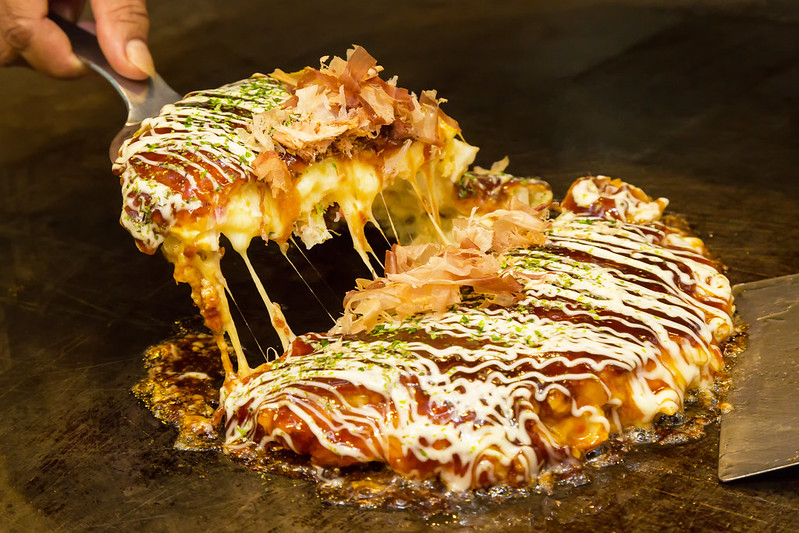
Dining in Japan
Okonomiyaki
A mix between a pancake and an omelet; often served with a variety of vegetables, seafood, beef, or pork.
Noodles
 There are 3 types of noodles common in Japan: ramen (Chinese noodles in very large bowls served in a chicken or pork stock with vegetables and/or meat); soba (traditional Japanese-style thin noodles, served either hot or cold, with a variety of ingredients); and udon (traditional Japanese-style noodles that are thicker and whiter than soba).
There are 3 types of noodles common in Japan: ramen (Chinese noodles in very large bowls served in a chicken or pork stock with vegetables and/or meat); soba (traditional Japanese-style thin noodles, served either hot or cold, with a variety of ingredients); and udon (traditional Japanese-style noodles that are thicker and whiter than soba).
Tempura
Tempura
Tempura are vegetables or seafood dipped into a wheat flour, egg, and water batter and deep fried in vegetable oil. Introduced by the Portuguese.

Sushi
Sushi is a slice of raw fish rolled into lightly vinegared rice. It is then served with a portion of soy sauce and a very hot green horseradish called wasabi.
Sashimi
A slice of raw fish without rice, served with soy sauce and wasabi.
UNAGI
Unagi is ocean eel cooked over hot coals with a touch of soy sauce and sweet sake.
Sukiyaki / Shabu-Shabu
Meals usually cooked at your table in a large pot filled with water. Many restaurants that specialize in one of these dishes will also specialize in the other and may feature “All You Can Eat and Drink” specials.
Yakitori
Yakitori
 Skewered parts of chicken on a stick, cooked over a charcoal fire. Yakitori is a common dish served with alcohol at Japanese bars, or izakaya.
Skewered parts of chicken on a stick, cooked over a charcoal fire. Yakitori is a common dish served with alcohol at Japanese bars, or izakaya.
Rice
Japanese rice (the japonica variety) is short-grained. It is more sticky and soft than other varieties, making it ideal for different Japanese dishes such as sushi.
Gyoza
Originally from the Chinese, this fried dumpling is popular in Japan. Its filling is made from pork and vegetables. Gyoza is eaten with a sauce made from soy sauce and vinegar.
Oyakodon
Domburi/Donburi
Any kind of Japanese dish that is composed of a bowl of rice with a food topping. Some popular donburi dishes and their toppings are oyakodon (chicken and egg), katsudon (pork cutlet), gyudon (beef gyudon), and tendon (tempura).
Gomaae
A popular Japanese side dish of spinach with sesame dressing.
Gyudon
Beef simmered with onion in a mildly sweet sauce made from a fish and seaweed stock called dashi, sweet rice wine (mirin), and soy sauce. It is usually eaten with rice.
Korokke
Chopped meat, vegetables, or seafood in a mashed potato or white sauce that is rolled in wheat flour, eggs, and Japanese bread crumbs and then deep-fried. Served with shredded cabbage and rice, and eaten with a sweet sauce similar to that of tonkatsu sauce.
Dining and Restaurants
Japanese restaurants usually specialize in a single type of dish, unlike their foreign counterparts which serve a wide range of Japanese dishes. Here are a few types of Japanese restaurants and their specialty dishes.
Sushi-ya
A Japanese restaurant that specializes in sushi (cooked vinegar rice with neta: toppings). Food patrons may sit around regular tables or at a sushi bar or counter. In sushi bars, customers can watch sushi chefs prepare the food.
Kaiten-zushi
A sushi restaurant where sushi is served on a conveyor belt and a more affordable restaurant than a sushi-ya. Customers can help themselves to whatever sushi dish they like. The number of plates used determines how much each customer pays. Sometimes these plates are coded according to price.
Soba-ya
A restaurant that specializes in thin noodles made from buckwheat flour. Some soba-ya also serve udon noodles. During summer, noodles are drained and cooled and served with a dipping sauce, while in winter, soba is served with hot soy-based broth.
Ramen-ya
Contrary to popular notion, ramen is not a native Japanese dish, but there are several ramen restaurants in Japan. Ramen-ya offer thin Chinese noodles served in hot broth with roast pork slices and vegetables. Some ramen-ya also offer Chinese-style food such as gyoza or dumplings with ramen.
Kare-ya
This restaurant serves Japanese curry rice (kare-raisu), which became popular when Indian curry powder was imported through England in the early 20th century. Dishes with a thick curry sauce and meat or seafood over rice are available in kare-ya.
Tonkatsu-ya
Tonkatsu-ya offer only tonkatsu—deep-fried pork cutlets served with rice and shredded cabbage. Tonkatsu is eaten with a dark brown thick sweet sauce or hot Japanese yellow mustard. Tonkatsu-ya may range from diner-style cafeterias to fine-dining establishments and may serve other deep-fried dishes such as korokke (like French croquettes).
Gyudon-ya
Gyudon-ya are inexpensive restaurants, usually fast-food chains, specializing in gyudon, a Japanese dish of rice topped with beef. The beef is simmered with onion on a mildly sweet sauce made from a fish and seaweed stock called dashi, sweet rice wine (mirin), and soy sauce.
Okonomiyaki-ya
Okonomiyaki is a Japanese pancake or omelette made from batter, vegetables, pork, seafood, or beef. In some okonomiyaki-ya,customers may sit around table with a hot plate built into the table and prepare their okonomiyaki themselves. Some restaurants also serve monjayaki, a more liquid version.
Yakitori-ya
Yakitori-ya specialize in grilled chicken skewers. Customers may choose yakitori cooked with salt or tare sauce which is a combination of sweet rice wine (mirin), soy sauce, sake or rice wine, and sugar. These are casual dining places, usually withg counter seating, but some high class restaurants offering yakitori as well.
Tempura-ya
Japanese restaurants that specialize in tempura—deep fried seafood or vegetables covered in a light batter made of cold water and wheat flour. Tempura-ya may also offer tendon or tempura donburi, a bowl of rice topped with tempura.
Unagi-ya
Unagi-ya are specialist restaurants that prepare unagi or freshwater eels as unadon or unagi donburi, sliced and basted unagi served on a bed of rice. Unagi are generally a summer dish.
Sukiyaki-ya
Sukiyaki-ya specialize in a hot pot cuisine called sukiyaki. Sukiyaki is eaten by using a flat iron pot on the table which is used to cook ingredients such as thinly sliced beef, green onions, tofu, shirataki noodles, and shiitake mushrooms. Diners crack a raw egg onto a separate dish and mix it with cooked food from the hot pot.
Izakaya
An izakaya is an informal drinking place where people can also eat finger food, salads, or grilled food (robata). Some izakayas have traditional tatami rooms with low tables, regular tables and chairs, or a mixture of both. Food and drinks can be ordered throughout the course of the meal. Some izakayas are “eat all you can” or “drink all you can” establishments with a time limit of two to three hours.
Shokudo
Shokudo offer a variety of dishes. Family restaurants or famiresu have become synonymous with shokudo in modern times; these restaurants offer Japanese, Chinese, and Western dishes to please every member of the family.
Teishoku-ya
Teishoku is a set menu with a main dish, a bowl of rice, and small portions of side dishes. Teishoku-ya offer these set menus and are prevalent in busy business districts.
Using Chopsticks
1. Break the chopsticks apart by holding the “thick” ends one in each hand, and pulling away. 2. Hold the bottom chopstick between the thumb and the ring finger. 3. Hold the top one between the thumb and the middle and index fingers, as you would hold a pen. 4. Move the top chopstick to pick up food.
Vegetarianism
Though vegetarianism is becoming more common, most Japanese families eat meat and fish. You may have more control over your eating habits with the dormitory option, but there are not many restaurants in Japan that offer foods for vegetarians. The host families are genuinely concerned with your well-being and will try to make every effort to accommodate you. However, please realize that it may not be possible to accommodate all of your special needs.

